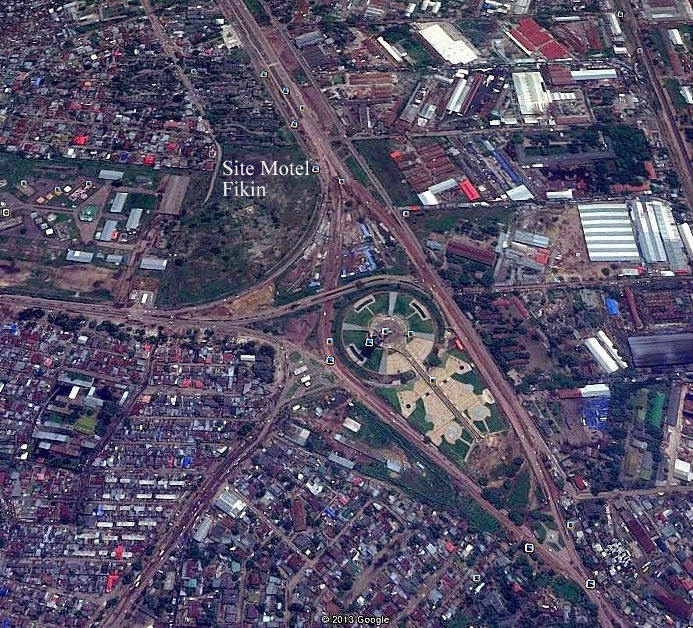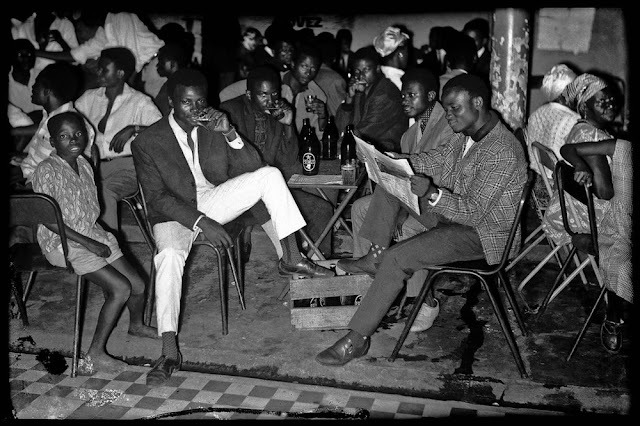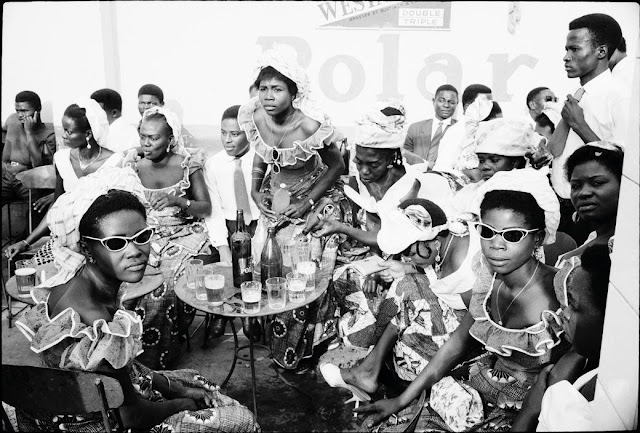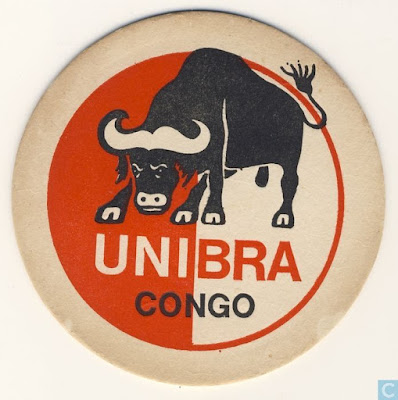One hundred twenty-five years ago, Dr. Aaron Sims built a small brick chapel overlooking Ngaliema Bay on the banks of the Congo River, with the help of Congolese he trained in construction and brick making. It is the oldest permanent building in Kinshasa and the oldest house of worship in the capital. A peer of Chief Ngaliema and Henry Morton Stanley, by 1891, Dr. Sims had already lived in Leopoldville for eight years and was consequently instrumental in the early development of the city.
![]() |
| Sims Chapel today |
Sims was a missionary of the Livingstone Inland Mission (LIM), an ecumenical British group that, beginning in 1878, sought to establish a chain of mission stations across Central Africa to further the work of David Livingstone. Sims sailed for the Congo at the head of a new LIM group in May 1882. Although a small LIM team had ventured to the north side of Stanley Pool (today’s Brazzaville) in December 1881, LIM now wanted to establish a base at the Pool to support further expansion into the heart of the Congo. By this time, Henry Stanley had completed his forward base at the Pool for the International Association of the Congo (AIC in French), and another British missionary group, the Baptist Missionary Society (BMS), established a station there in July 1882 (See Mar. 5, 2011). Sims met Stanley at Manyanga (near contemporary Mbanza Ngungu) on his way along the caravan route to the Pool and obtained a lease for the LIM station on a plot of land at Leopoldville (The notion that Stanley negotiated the land concession on LIM’s behalf on the grounds of the current CBCO complex, as suggested in my Jan. 13, 2011 post, is the stuff of urban legend, as the following narrative will clarify). ![]() |
| American and British mission stations between the coast and Stanley Pool |
![]() |
Contemporary artist's depiction of Stanley Pool.
Sims' station was in the wooded valley between the steamer (center) and the sandbar (right) |
Sims and fellow missionaries Joseph Clark and K.J. Pettersson reached the Pool in February 1883. Within the first week Pettersson completed a 4 x 6 square meter house. There was some initial friction between the missionaries and Stanley and the AIC. Though billed as a philanthropic and scientific venture, the AIC was actually King Leopold’s ruse to gain control of the Congo Basin. As such, he was wary of British missionary groups that might open the way for British capitalist interests. Consequently, Stanley was advised to keep missionaries close to his own stations where their evangelical work could also provide a humanitarian fig leaf for Leopold’s plans. The missionaries, for their part, were horrified to witness the brutal treatment meted out on the Congolese by Stanley’s troops along the caravan road and sought to distance themselves. When the LIM party encountered a welcoming Bahumbu chief at Ngoma, 15 miles south of Leopoldville they initially planned a station there, but Stanley prevailed on them to locate near his base at the Pool. (Interestingly, 15 miles due south of Ngaliema Bay are the Chutes de la Lukaya & Lola ya Bonobo sanctuary. As this is on the railway line and general route of the caravan trail, it is possible that Ngoma was in the vicinity – see map above).
![]() |
| Artist's rendering of the LIM station at Leopoldville |
By mid-1883, Sims and his compatriots had completed a permanent station on an 3-hectare site, including housing for a married missionary, another to accommodate one or two single missionaries, houses for Congolese workers, a kitchen and storehouse. There was also a building to store parts for the steamer “Henry Reed”, which was being brought up from the coast in pieces by porters. The station was located in a valley about 1 km from the river, most likely in the vicinity of the contemporary St. Leopold Church on Ave. des Ecuries. Stanley noted approvingly, “the site is fine, the mission place compact, neat, well-regulated…the most complete affair I have seen on the Congo”. In 1884 Stanley approved an expansion of the LIM mission site.
![]() |
| Leopoldville late 1880s - ABMU station is bottom center. Note road to Ngoma village. |
In September 1884, LIM ceded its work to the American Baptist Missionary Union (ABMU, later ABFMS and now the Communauté Baptiste du Congo-Ouest, CBCO), transferring all property and rights in the Congo for $125,000. Dr. Sims and several other LIM missionaries elected to join ABMU and continue the work. The rainy season that year produced unusually high waters and the missionaries decided to launch the hull of “Henry Reed” from the BMS beach (within the present Chanic shipyards) and complete the superstructure afterwards. At the time, Sims was on a 6-month trip to Stanley Falls (Kisangani) with BMS missionary George Grenfell in the BMS’ steamer “Peace”. In 1885, Sims attempted to establish an ABMU station at Stanleyville, but had to abandon the initiative the following year when the Belgian military campaign against the Afro-Arabs raised insecurity in the region. Sims returned to Leopoldville and travelled on to UK and the United States, where his favorable description of the work in the Congo help strengthen American support for the new mission field.
![]() |
| The "Henry Reed", named for a LIM donor in Australia |
The “Henry Reed” was key to supporting and extending the chain of stations on the arc of the Congo River. Capt. Arthur Billington made a first trip up river in the “Henry Reed” in January 1885, reaching Wangata (Mbandaka), which had been established by Pettersson. New stations were subsequently opened at Tshumbiri, Irebu and Ikoko. As one of the few steamers operating on the upper Congo, the “Henry Reed” often carried non-missionary passengers and cargo, including Emory Taunt of the U.S. Navy’s Congo Expedition, German explorers Kund and Tappenbeck and the botanist Dr. Buttner, as well as agents of the Congo Free State. In 1886, the Congo Free State (successor in 1885 to the AIC) contracted the steamer to transport supplies for the Afro-Arab campaign. In return, ABMU staff would be granted free passage on Free State steamers. In March 1887, the “Henry Reed” was returned to ABMU, just as Henry Stanley arrived in Congo at the head of the Emin Pacha Relief Expedition to the Province of Equatoria in Sudan. Considering the options of shorter routes to Sudan via East Africa, the rescue expedition was essentially a public-relations gambit by Leopold II to demonstrate his mastery of the territory. Stanley found the State steamer fleet in Leopoldville in disrepair and requested use of the “Peace” and “Henry Reed”. Billington refused, citing the need for repairs on his recently returned steamer. Furious, Stanley sent a military squad to seize the “Henry Reed”, which sailed April 29, 1887 towing a barge with 131 men aboard. Stanley claimed in his memoirs that Sims had applied for a position with the Expedition, but having been denied, sought to hamper his “humanitarian” mission.
![]() |
| The "Henry Reed" departs Leopoldville. Note American "Stars and Stripes" flag over bow. |
On his return to the Congo from the US in 1887, Sims continued to work on compiling a Kiteke dictionary, translating the Gospel of John, and collecting vocabulary for a Kibangi dictionary, a precursor of Lingala spoken on the upper river. By 1888, Sims’ lease was coming to an end and his house had become “old and good for nothing” so he decided to purchase land in the African town (Ntamo), where he had been conducting regular Sunday services among the Bateke residents. "On the river-side in the town I have built a frame house, eight feet from the ground, on piles adapted to my work, and completed it substantially except the walls, which for want of funds are partly covered with mats and boards from provision boxes". A school, small hospital and solid warehouse to store goods destined for stations on the upper river were also under construction.
![]() |
| Map of Leopoldville prior to Sims move (old station lower left, new site center right) |
Throughout 1889, Sims was alone at Leopoldville, as Billington and Glenesk had left to occupy stations upriver. In addition to treating the sick, he was building a dormitory to house the school children. In August, he noted, “I am alone, and so cannot leave the place, as caravans arrive always … I feel my loneliness acutely”. In November he reported, “Transport down country has been slack, but now as some cloth has come to Lukunga (near Mbanza Ngungu), I suppose I shall have a brisk time, as some three hundred loads have accumulated” (at Matadi). His duties as logistician were significant, "Sixteen hundred carrier's loads for us and the Congo Balolo Mission (CBM -- another offshoot of the LIM) passed through my hands last year, and being alone I was not able to visit the surrounding country." This amounted to 96 tons of cargo painstakingly transported over 350 kilometers of caravan trails in 60-pound loads.
In December 1889, Dragutan Lerman, a Croatian explorer who had worked with Stanley when Sims first arrived in Congo, visited the station. Sims, he observed, had,
"arranged his station nicely, consisting of the main building occupied by Dr. Sims and surrounded by chalets for the guests (guest-room, warehouses and the kitchen). On the right of the main building is the hospital, with a capacity of 20 beds. Opposite the hospital is the school where 20 pupils are learning how to read or write. This is all under Dr. Sims' control, who does it alone without anybody's help. He works diligently the whole day, working for the well-being of humanity without discrimination of color."
![]() |
| ABMU house at the new station. |
In January 1891, Sims wrote to ABMU headquarters in Boston, “The Chapel is full each day of our own people, strangers, and the sick, so that I must set about building a new one of adobe brick when the weather permits.” The previous Christmas day, Sims had received reinforcements, Fritz and Boletta Gleichman. They were, “delighted to find such a nice-looking station, good buildings, and well-laid-out grounds, good storehouses, schoolroom, and hospital and boy’s house, and so genial a man as Dr. Sims.” Gleichman immediately began looking for suitable land on which to build a house, which he estimated would cost about 30 or 40 Pounds. By March, he could report he’d been granted 150 meters of land next to Dr. Sims’ on which, “we intend to leave a space for a good chapel to be built in the future”. The sale contract stipulated a payment of £21 to the State and £10 to the local Congolese authorities.
Gleichman became actively engaged in building his house, which involved felling giant Nlongwa (Hallea Stipulosa) hardwood trees from the swamp where Ave. du Montagne now runs behind the CBCO property. Workers had already cut 7 Nlongwa, which yielded 44 large pieces of timber and Gleichman ordered another 12 to be taken down for lumber, noting, “It is a dreadful task to get out timber; the men sink in water and mud up to their hips with the heavy loads on their shoulders.”
The ABMU station now comprised fourteen buildings, all set on pilings, made of local timber including plank roofs, though Sims’ house had a corrugated iron roof and Gleichman planned the same. The doctor estimated that the structures could last 15-20 years if cared for properly. A better solution would be to build in brick, which was resistant to termites. Sims had decided to build a brick cook-house and was instructing the school students how to make and lay bricks. By July 1891, the students had made thousands of bricks, though Gleichman appealed to headquarters for a brick press costing £15 (half the cost of his land) to speed up the process and enhance the students’ skill training. As Sims described, “Thus order, tidiness, the use of the straight line, and industry have been taught without constraint, and I fully believe they have been happy”. Sims had built a kiln and was ready to fire floor and roofing tiles.
![]() |
| Brick pharmacy at the Ntamo station. |
This effort produced a new pharmacy built of brick, and incorporating more skilled carpentry. Sims was now ready to realize his dream from when he first came to the country, to gather together the people – the church – in a building he would help them to make. The new structure begun in October 1891 would be 20 by 60 feet, built according to the best plans he could find adapted to the country. The design incorporated gothic windows and an altar and seating plan in the form of a cross. When the building was completed, some 50 Congolese members began worshiping there.
![]() |
| The new chapel. |
Then in 1892, the Bateke under Chief Ngaliema, fed up with the exactions of the Congo Free State authorities, relocated en-masse across the Pool to Brazzaville. Although the Bateke had not been particularly receptive to Sims and his colleagues’ evangelism, the departure of several thousand people significantly reduced opportunities for outreach and witness. The Baptists could not close the station because it was critical as a transportation nexus for the mission stations upriver. In addition, the school, run by the Gleichmans drew students from a wider region comprising eight ethnic groups.
![]() |
| Side view of the new chapel. |
Fritz Gleichman died suddenly in June 1893 and was buried behind the chapel, overlooking Ngaliema Bay. His is the only grave on the compound. Thomas Adams, a new missionary who had come to serve as evangelist on the “Henry Reed”, stepped in to support Dr. Sims. He accompanied Mrs. Gleichman to Matadi and then returned to take over the schoolwork. He remained Sims’ longest serving collaborator in Leopoldville.
![]() |
| The headstone on Fritz Gleichman's grave. |
In 1893, Sims built another brick building on the station. Known in later years as “Sims’ House”, there is no mention of any residential construction in the “Baptist Missionary Monthly” during the 1893-94 period. Frank Vincent, an American world-traveler and journalist visiting in September noted, “Among the buildings of the Mission is a neat little brick church, and, besides the dwelling for the future missionaries, an edifice is in course of erection which is to serve for a technical school. Elsewhere the boys are now taught carpentry, and brick and tile making”. Given the likelihood that facilities for Congolese were separated from the missionary residences and church situated above the river, this new technical school could have been the building, which in 1961 housed the first classes of the American School (See Jan. 13, 2011). ![]() |
| Rear view of "Sims' House" |
![]() |
| Date plaque in the gable end of "Sims' House" |
The work of managing such a large station was wearing on Sims. He had to cope with receiving and shipping goods, tending to sick white people (in addition to his regular Congolese patients), hosting visitors, maintaining correspondence and reports. In early 1894, landowners were instructed to demonstrate “effective occupation” of their properties or risk losing them. Sims organized planting thousands of fruit trees on the concession and was constructing a farm building for a few cows he had acquired. A violent tornado in March 1895 caused extensive damage to ten buildings on the station, including the “handsome industrial school”. The Congo Balolo Mission’s storehouse was lifted into the air and deposited some distance away without causing any injury.
A fundamental change in transportation technology was beginning to impact Leopoldville. The railway approaching from Matadi was starting to draw curious young people away. There were problems with porters who did not deliver their loads, and as a consequence, the mission lacked barter goods to exchange for food. This affected the remuneration of preaching staff and was less of an incentive for children to attend school. Still, Sims was upbeat about the coming of the train, as it would free large numbers of Congolese from the burden of portage – “100,000 loads a year” – and ease the travel of evangelists to reach distant villages. In early March 1898, he observed with pleasure that the railway would arrive at Kinshasa in a week’s time (See Jan. 23, 2011). The Leopoldville station was only 50 meters from the mission. ![]() |
| The train station at Leopoldville (now Kintambo Magasins) |
After the arrival of the railroad, Sims took his first furlough in twelve years and left the station under the supervision of the Congo Balolo Mission, which maintained a transport base there. He visited American Baptist missions in Asia and addressed the American Baptist annual meeting in the US. When he returned to Congo in October 1900, he was assigned to Matadi, where he resumed his role as multi-talented healer, preacher, treasurer, logistics master, transportation coordinator and host to weary travelers, serving in the port city until his retirement in 1922. By mutual agreement, the station at Leopoldville and the “Henry Reed” were turned over to CBM, which serviced the upriver Baptist stations while Sims provided similar logistic support to CBM from Matadi. The American Presbyterian Congo Mission operated the steamer “Lapsley” in support of its work in the Kasai region from the mission, represented locally by a Congolese named Mpeya. The CBM representative also managed the facilities as a guesthouse for transiting missionaries of all groups, who tended to be offended by the insalubrious and intemperate conditions in the local hotels. One of the guests included William Henry Sheppard, an African American Presbyterian missionary, who stayed in Sims’ house in early 1909 while awaiting trial for libel against the Compagnie du Kasai rubber company.
![]() |
| Sims Chapel during the period of CBM tenure. |
![]() |
| Sims Chapel during the CBM period - note reference to "Mission Anglaise" |
In 1902, the first conference of protestant missions was held on the campus, and the meeting led to the formation of the Congo Protestant Council (now Eglise du Christ au Congo). At the second meeting of the Council held in Leopoldville in 1904 and again in 1906, resolutions denouncing the Leopoldian regime’s barbaric treatment of the Congolese were issued. Much of the documentation of these atrocities was compiled by British Consul, Roger Casement, who hired the “Henry Reed” for an extended fact-finding journey in June 1903. At the January 1904 conference, ABFMS transferred the “Henry Reed” back to CBM, thanking its representative for his “kindness and hospitality” and “faithful care of the property”.
![]() |
| Leopoldville in 1903. The Baptist mission is located above the "GO" in Congo. |
![]() |
| Chapel service during the CBM period. |
![]() |
| The Chapel in 2004. |
![]() |
| Art exhibit organized by Symphonie des Arts in 2004. Table in foreground was saved from the "Henry Reed" |
In 1912, ABFMS and CBM discussed the proposition that the former reopen the Leopoldville station with a resident missionary, as CBM wanted focus its resources on its mission field in Equateur Province. Instead, missionaries from Sona Bata (90 kilometers west on the railway line) visited the church in Leopoldville regularly until Pastor Moses Kikwakwa was assigned in 1922. The “Henry Reed” was sold to Leopoldville businessman Emile Delcommune in 1916. At the onset of the Depression, the old steamer was moored in Kinshasa when a severe windstorm sank it. Once Leopoldville became the capital of the colony in 1928, the Mission decided to relocate its administrative headquarters from Matadi to Leopoldville (See. Apr. 30, 2011).
SIMS CHAPEL THROUGH THE YEARS
![]() |
| 1950s - taken about the time I moved to Leopoldville. |
![]() |
| 1966 - the city is now called Kinshasa |
![]() |
1978 - Commemorative card for the Centennial of Protestant evangelism in Congo.
Artwork for the gothic windows was completed by Martha Emmert's students. |
![]() |
| 2004 - Sims Chapel |
![]() |
| 2016 - The entrance |
![]() |
| 2016 - side view |
![]() |
| 2016 - rear view |
A big thanks to NA and MG for help with the photos.
Sources:
- Baptist Missionary Monthly (multiple years)
- Lagergen, David, 1970.Mission and state in the Congo, Lund: Gleerup.
- Smith, Viola, L. 2006. Batie sur le roc, Niagara Graphics, Virgil, ON.
.jpg)
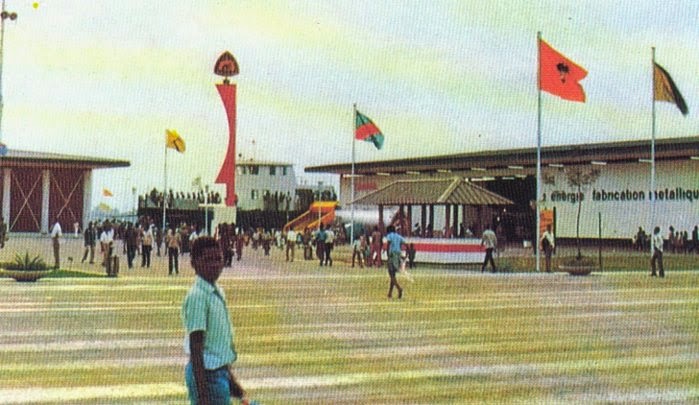.jpg)
.jpg)
.jpg)
.jpg)
.jpg)
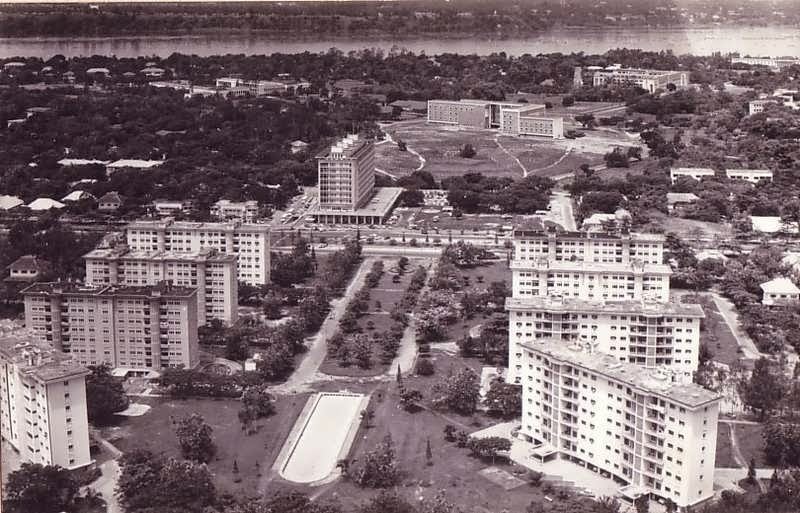.jpg)
.jpg)

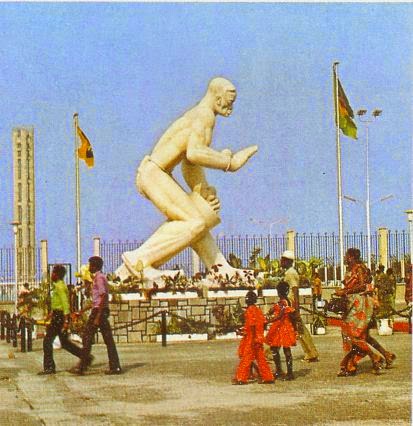.jpg)

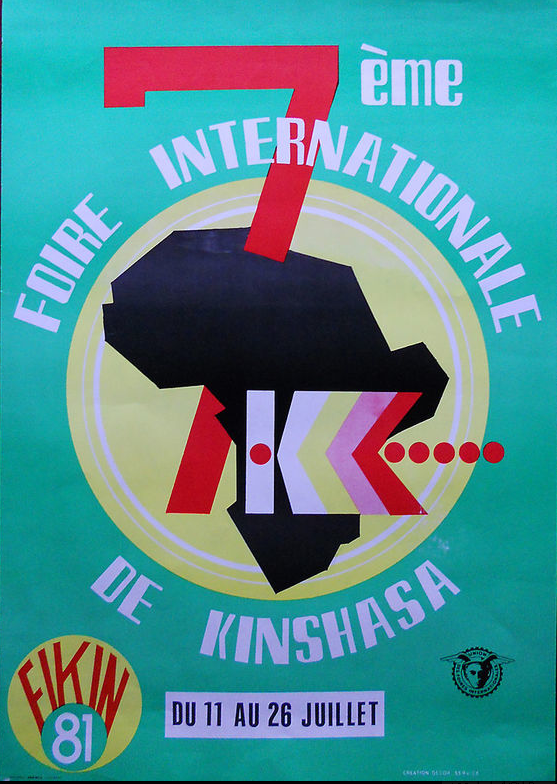.png)
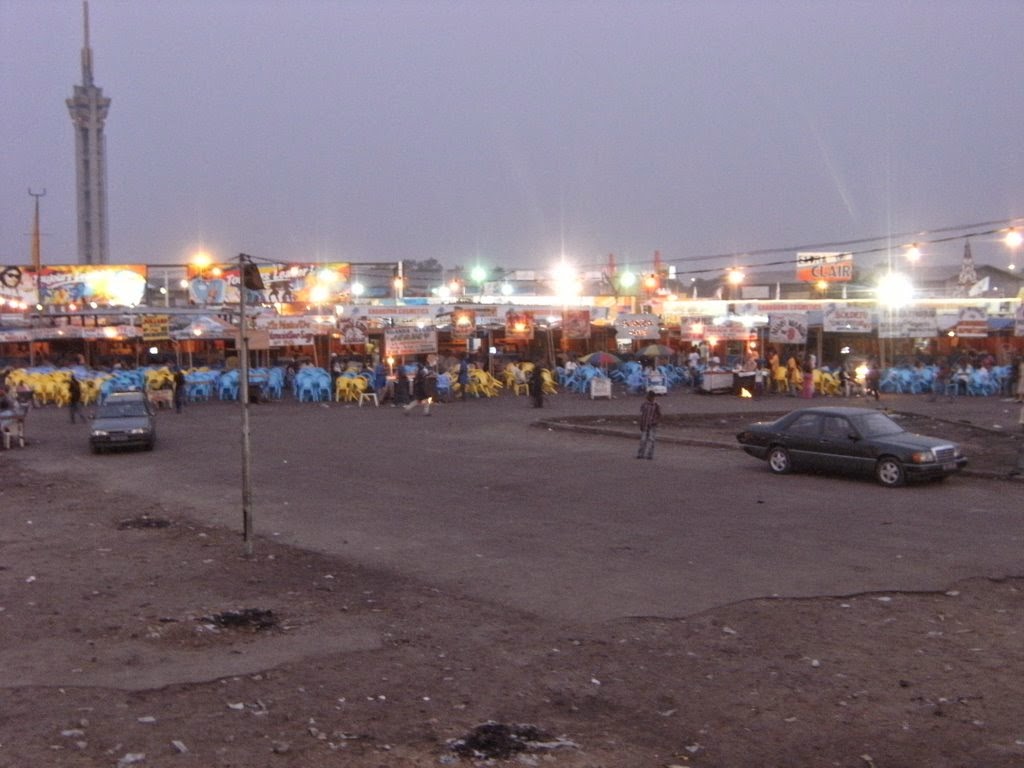.jpg)
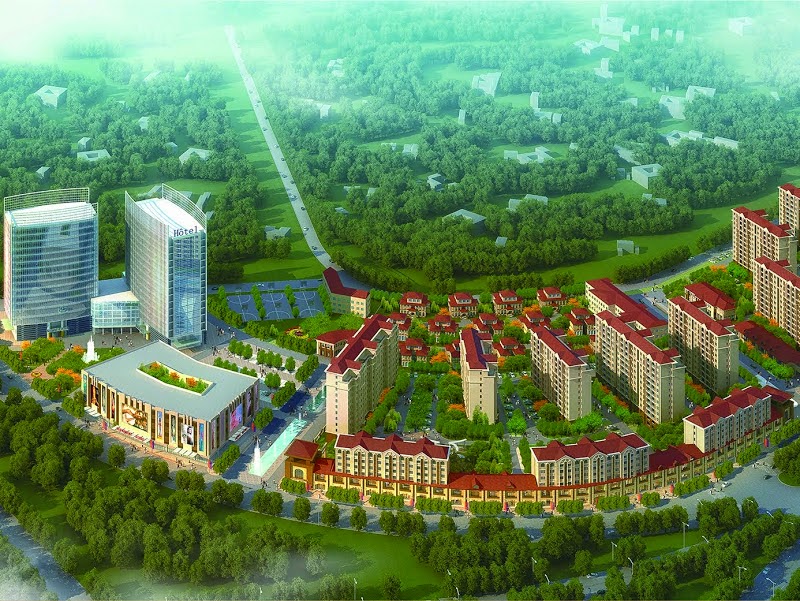.jpg)
